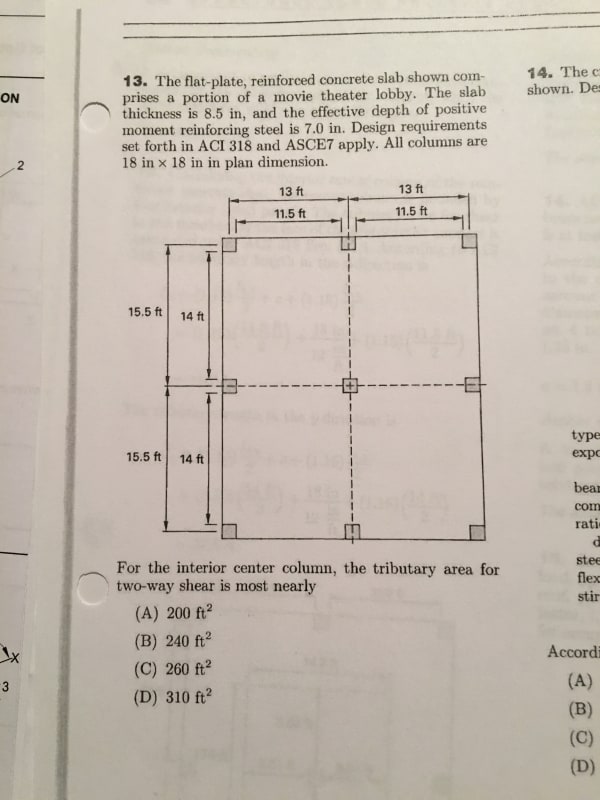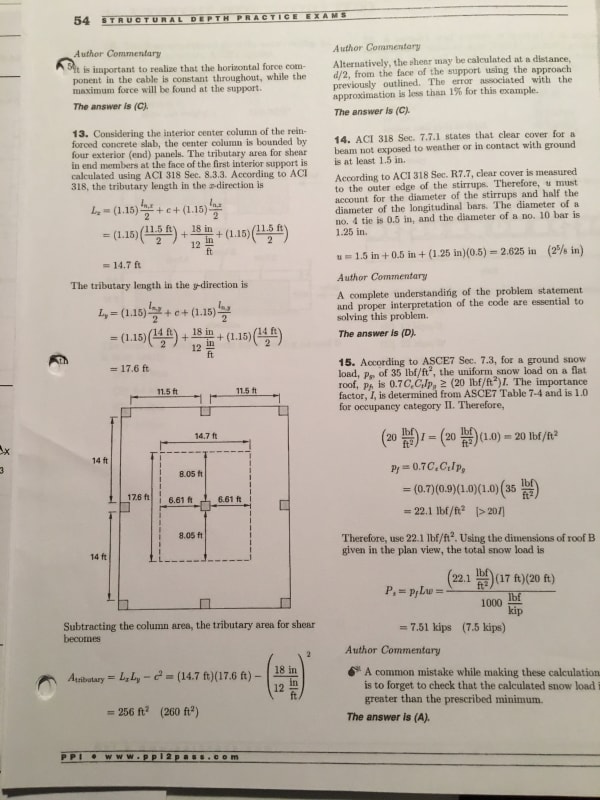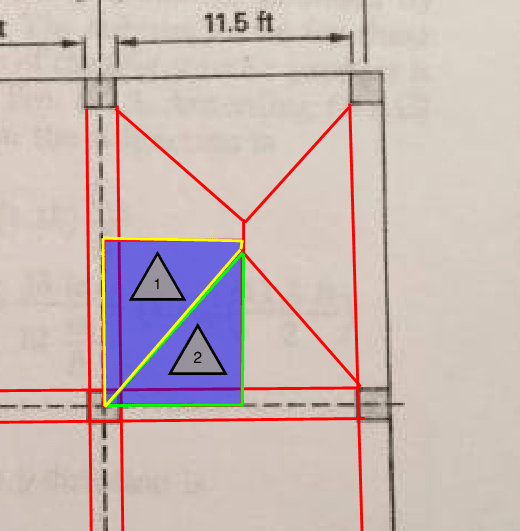DSNOW
Structural
- Apr 2, 2019
- 1


I am currently studying for the P.E. and I’m working an old practice test. Can someone please explain where the formula for the length in the X and Y came from? I understand the tributary area is the area the column is supporting but I don’t understand the 15% increase in area. I have looked through ACI318-14 and didn’t see this equation anywhere. Any help would be greatly appreciated.

